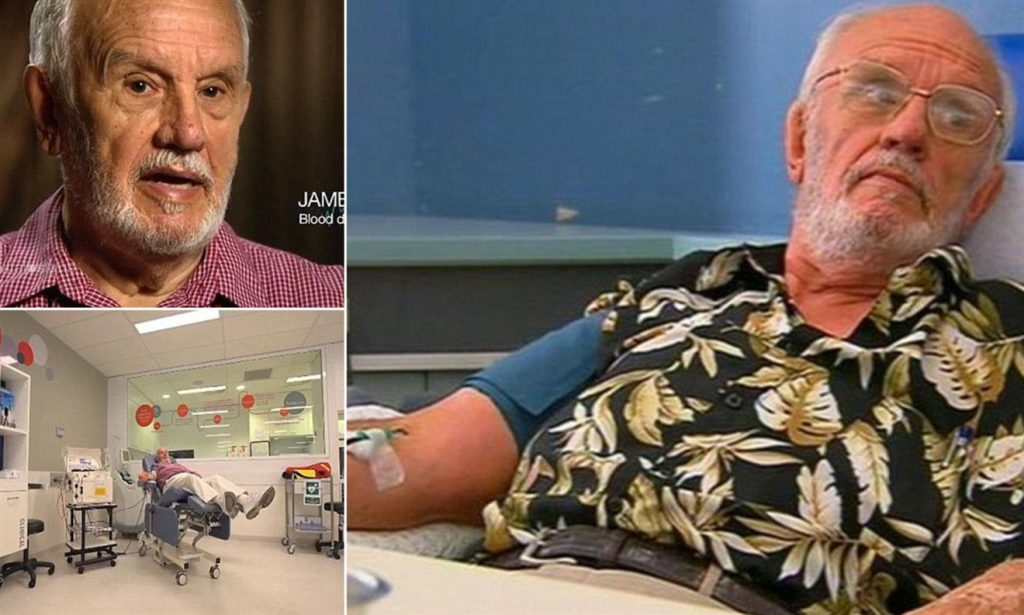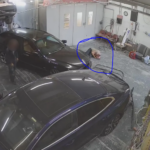
Meet The Man Who Donated Blood Every Week For 60 Years: Ended Up Saving 2. 4million Babies!
Published on January 18, 2021 at 9:43 AM by Mc Noel Kasinja
James Harrison worked as a journalist on various newspapers in Victoria from his arrival there in 1839 until his return to England about 1873, and has left a a remarkable blueprint on the face of the earth.
JAMES HARRISON was born in Renton, near Ben Lomond, Scotland, April 17, 1816. He designed and built the plant for the first Australian manufacture of ice 1854; formed the Sydney Ice Company with P. N. Russell 1860; designed a revolutionary refrigerator 1860; work on the refrigeration of ships for the export of meat from 1870

James Harrison worked as a journalist on various newspapers in Victoria from his arrival there in 1839 until his return to England about 1873
Harrison was a member of Geelong’ s first town council in 1850 and represented Geelong in the Victorian Legislative Council from November 1854 until its abolition in March 1856. Harrison then represented Geelong 1858– 59 and Geelong West 1859– 60 in the Victorian Legislative Assembly.
As an editor he was an early advocate for tariff protection which later he brought to prominence when he was editor of The Age under the proprietorship of David Syme. But his rise ceased abruptly in 1854 after a controversial libel suit was brought against him by the Crown Prosecutor George Mackay whose evident drunkenness on duty Harrison had editorially deplored. The jury brought in a verdict for Mackay with Harrison to pay £800 damages. In 1862, although his assets were worth £22, 000, he had to sell the Advertiser to escape bankruptcy.

It was while he owned this paper from 1842 to 1862 that his interest in refrigeration and ice- making began to develop. Whilst cleaning movable type with ether, he noticed that the evaporating fluid would leave the metal type cold to the touch.
Harrison’ s first mechanical ice- making machine began operation in 1851on the banks of the Barwon River at Rocky Point in Geelong. His first commercial ice- making machine followed in 1854, and his patent for an ether vapor- compression refrigeration system was granted in 1855. This novel system used a compressor to force the refrigeration gas to pass through a condenser, where it cooled down and liquefied. The liquefied gas then circulated through the refrigeration coils and vaporised again, cooling down the surrounding system. The machine employed a 5 m (16 ft. ) flywheel and produced 3, 000 kilograms (6, 600 lb) of ice per day. In 1856 Harrison went to London where he patented both his process (747 of 1856) and his apparatus (2362 of 1857).

Also in 1856, James Harrison, was commissioned by a brewery to build a machine that could cool beer. His system was almost immediately taken up by the brewing industry and was also widely used by meatpacking factories.

Though Harrison had commercial success establishing a second ice company back in Sydney in 1860, he later entered the debate of how to compete against the American advantage of unrefrigerated beef sales to the United Kingdom. He wrote Fresh Meat frozen and packed as if for a voyage, so that the refrigerating process may be continued for any required period, and in 1873 prepared the sailing ship Norfolk for an experimental beef shipment to the United Kingdom. His choice of a cold room system instead of installing a refrigeration system upon the ship itself proved disastrous when the ice was consumed faster than expected. The experiment failed, ruining public confidence in refrigerated meat at that time. He returned to journalism, becoming editor of the Melbourne Age in 1867.
Harrison returned to Geelong in 1892 and died at his Point Henry home in 1893.



